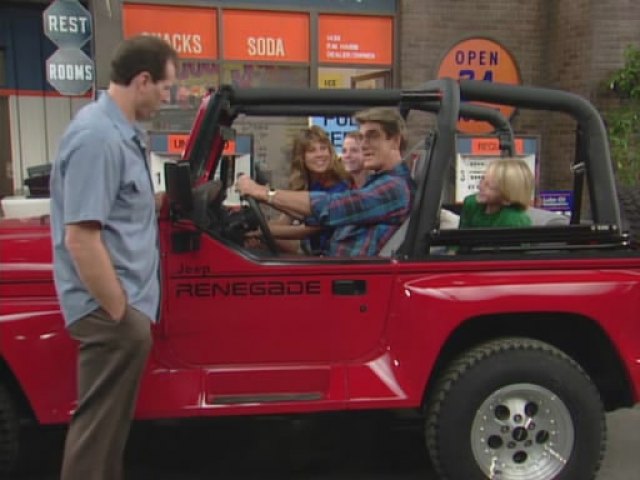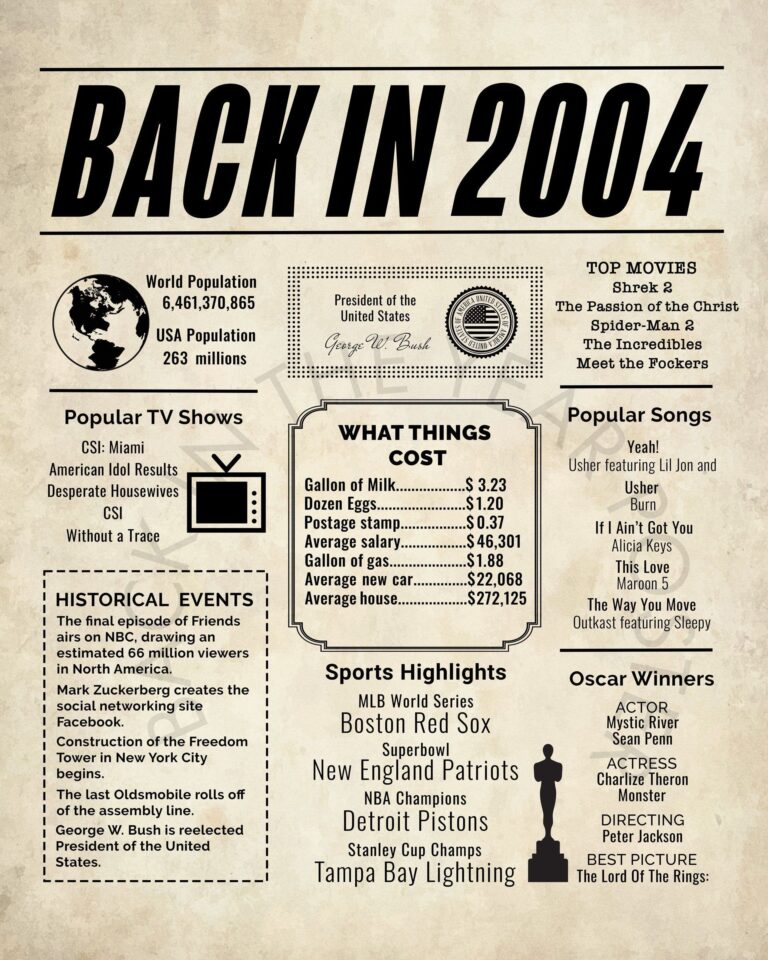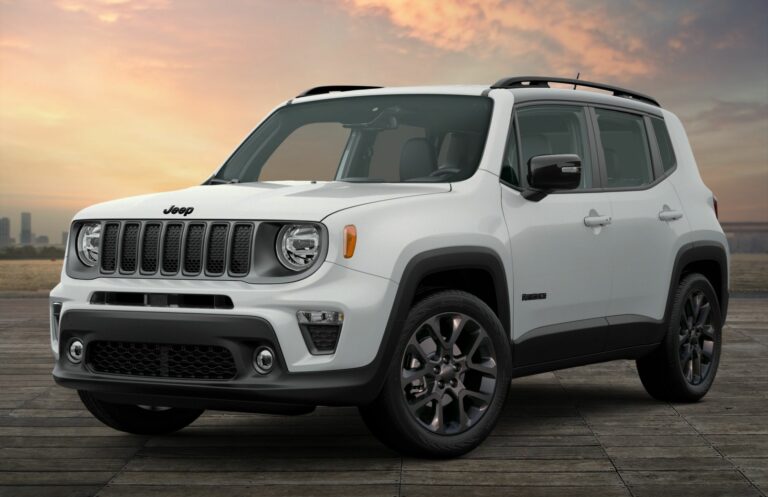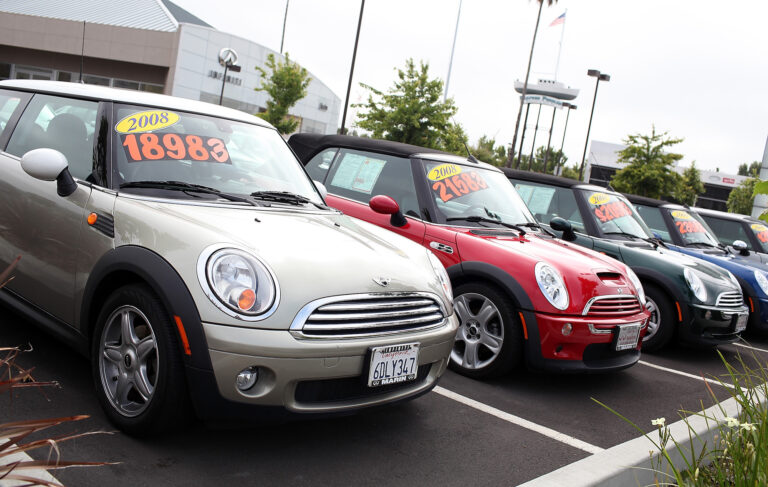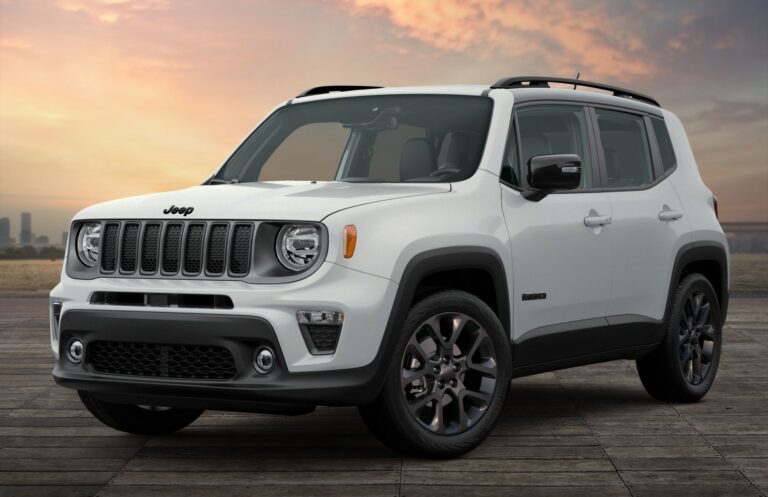1991 Jeep Wrangler Body For Sale: Your Gateway to Restoration and Customization
1991 Jeep Wrangler Body For Sale: Your Gateway to Restoration and Customization jeeps.truckstrend.com
The 1991 Jeep Wrangler, part of the iconic YJ generation (1987-1995), holds a special place in the hearts of off-road enthusiasts and classic vehicle aficionados. Known for its distinct square headlights – a departure from its CJ predecessors – and robust leaf-spring suspension, the YJ offers a unique blend of vintage charm and rugged capability. While finding a complete, rust-free 1991 Wrangler in pristine condition can be a challenging and costly endeavor, the market for a "1991 Jeep Wrangler Body For Sale" presents a compelling alternative. This isn’t about buying a whole vehicle; rather, it’s about acquiring the core sheet metal – the tub, fenders, hood, and sometimes doors – that forms the foundation of this beloved off-roader.
Whether you’re embarking on a full frame-off restoration, replacing a severely rusted or damaged original body, or building a custom off-road rig from the ground up, a standalone 1991 Jeep Wrangler body can be the crucial starting point. It offers a blank canvas for enthusiasts to breathe new life into a classic, tailoring it precisely to their vision without the overhead of a complete, potentially compromised, donor vehicle. This article will serve as your comprehensive guide to understanding, finding, evaluating, and acquiring a 1991 Jeep Wrangler body, transforming a complex search into a manageable and rewarding project.
1991 Jeep Wrangler Body For Sale: Your Gateway to Restoration and Customization
Why Consider a 1991 Jeep Wrangler Body Acquisition?
The decision to purchase a standalone Jeep Wrangler body, particularly a vintage 1991 YJ, is often driven by several practical and passionate motivations:
- Restoration Projects: Many classic Jeeps suffer from extensive rust, especially in common areas like floorboards, rocker panels, and body mounts. If your current YJ’s frame is solid but the body is beyond economical repair, a clean replacement body is a cost-effective solution for a full restoration.
- Custom Builds & Swaps: For those looking to build a unique off-road monster, a street cruiser, or even a show vehicle, starting with a bare body allows for complete customization. This includes custom interiors, roll cages, suspension modifications, and drivetrain swaps without having to dismantle an entire running vehicle.
- Accident Repair: If your 1991 Wrangler has been involved in an accident that has significantly damaged the body but left the frame and mechanicals intact, sourcing a replacement body can be more feasible than extensive panel beating and repair.
- Preserving Authenticity: While aftermarket replacement bodies are available, many purists prefer to use an original factory steel body, even if it requires some restoration work, to maintain the vehicle’s authenticity and classic appeal.
- Cost-Effectiveness (Potentially): In some cases, purchasing a body and building up from there can be more economical than buying a complete running vehicle that still requires significant body work. It allows you to budget for specific components as you go.

Understanding the 1991 Jeep Wrangler YJ Body
The YJ generation, produced from 1987 to 1995, marked a significant evolution from the CJ series, most notably with its wider stance, improved handling, and those polarizing square headlights. The 1991 model year falls squarely in the middle of this production run, sharing most body characteristics with other YJ models.
A "body for sale" typically refers to the steel tub (the main passenger compartment, including floorboards, firewall, rear wheel wells, and sometimes the windshield frame), along with varying combinations of fenders, hood, grille, and tailgate. Doors are often sold separately but can sometimes be included.
Key characteristics and common considerations for a YJ body:
- Construction: The YJ body is primarily constructed from stamped steel panels.
- Common Rust Areas: Be extremely vigilant about rust in areas prone to moisture and salt exposure:
- Floorboards (especially under the pedals and rear seats)
- Rocker panels (beneath the doors)
- Rear quarter panels (behind the rear wheels)
- Body mounts (where the body attaches to the frame)
- Windshield frame bottom
- Tailgate (especially around the spare tire carrier mounts)
- Dimensions: The YJ has a wheelbase of 93.4 inches. The body itself is relatively compact, but still requires adequate space for transport and storage.
- Distinguishing Features: The 1991 YJ body is identifiable by its square headlight cutouts, the specific cowl and firewall design, and the overall dimensions that differentiate it from the earlier CJs and later TJs (which feature round headlights and a different body design).
What to Look For When Buying a 1991 Jeep Wrangler Body
Acquiring a used vehicle body is not the same as buying a used car. A meticulous inspection is paramount. Here’s what to prioritize:
- Condition, Condition, Condition: This is the most critical factor.
- Rust: Differentiate between surface rust (manageable) and structural rust (potentially fatal). Pay close attention to the common rust areas listed above. Use a magnet to detect excessive body filler (Bondo) over rust holes. Probe suspicious areas with a screwdriver (gently!).
- Dents and Damage: Assess the extent of any dents, creases, or previous accident damage. While minor dents are fixable, major structural deformation can be costly or impossible to repair correctly.
- Previous Repairs: Look for signs of shoddy repairs, poor welds, or mismatched paint indicating previous patchwork.
- Completeness: Clarify exactly what is included in the sale. Does it come with the hood, fenders, grille, tailgate, and doors? Are the inner fender wells present? The more complete it is, the less you’ll have to source separately.
- Title and VIN: While a body itself typically doesn’t have a separate title, it’s crucial to understand the origin. If it’s a "body-off" from a salvaged vehicle, inquire about the donor vehicle’s VIN and if any associated paperwork can be provided. This is vital for legal registration later if you’re building a vehicle around this body. Ensure there are no outstanding liens or salvage titles attached to the original vehicle if the VIN is still present on the firewall.
- Storage Conditions: Ask how the body has been stored. A body stored indoors, out of the elements, will likely be in much better condition than one left outside in a field for years.
- In-Person Inspection: If at all possible, always conduct an in-person inspection. Photos can be deceiving. Bring a powerful flashlight, a magnet, and even a small hammer (for tapping, not damaging) to listen for solid metal vs. bondo.
- Body Mounts: Inspect the integrity of all body mounts where the body attaches to the frame. These are critical structural points and are common areas for severe rust.
Where to Find a 1991 Jeep Wrangler Body
The search for a specific vintage body requires patience and a multi-pronged approach:
- Online Marketplaces:
- eBay Motors: Often has a dedicated section for vehicle bodies, though shipping can be a major hurdle.
- Craigslist & Facebook Marketplace: Excellent for local finds, minimizing shipping costs. Use specific search terms like "YJ body," "Jeep Wrangler tub," or "1991 Jeep body."
- Dedicated Jeep Forums & Classifieds: Websites like JeepForum.com, WranglerForum.com, and specific YJ enthusiast groups on Facebook often have "parts for sale" sections where members might be offloading old project bodies.
- Salvage Yards & Junkyards: Call local and regional salvage yards. They often acquire wrecked vehicles that may have an intact body even if the frame is bent. Be prepared to remove the body yourself in some cases.
- Specialized Jeep Parts Dealers/Restoration Shops: Some shops that specialize in Jeep restoration or parts might have donor bodies on hand, though they might be pricier.
- Word-of-Mouth & Local Car Shows: Networking within the Jeep community can sometimes yield unexpected leads.
The Process of Acquisition and Transport
Once you’ve found a suitable body, the practicalities of acquiring it come into play:
- Negotiation: Prices for used bodies vary wildly based on condition, completeness, and demand. Don’t be afraid to negotiate, especially if you’re paying cash or picking up quickly.
- Payment: Cash is often preferred for private sales. For larger transactions, consider a cashier’s check or secure online payment methods.
- Logistics & Transport: This is often the most challenging aspect.
- Weight: A bare YJ tub can weigh several hundred pounds (approx. 300-500 lbs), and with fenders, hood, etc., it can easily exceed 600-800 lbs.
- Dimensions: It’s bulky. You’ll need a flatbed trailer, a large utility trailer, or potentially even a U-Haul truck with a ramp. Ensure it’s properly secured to prevent shifting during transit.
- Assistance: You’ll need at least 2-4 strong people to safely load and unload a body, or access to a forklift or engine hoist.
- Professional Transport: For long distances, consider using a vehicle transport service, but ensure they are equipped to handle a bare body and provide adequate insurance.
Restoration vs. Aftermarket Replacement Bodies
While this article focuses on finding a used 1991 Jeep Wrangler body, it’s worth briefly touching on the alternative: new aftermarket bodies.
- Original Used Body (Focus of this article):
- Pros: Authentic factory steel, potentially lower initial cost, preserves classic originality.
- Cons: Almost always requires rust repair, dent removal, and extensive prep work; hidden damage can be a nasty surprise.
- New Aftermarket Body (Steel or Fiberglass):
- Pros: Rust-free, perfectly straight panels (usually), less prep work, sometimes reinforced in common problem areas.
- Cons: Significantly more expensive (often $5,000+ for a bare steel tub), not "original," may require minor fitment adjustments.
The choice largely depends on your budget, your desire for originality, and your skill level in bodywork. For many enthusiasts, the challenge and reward of restoring an original 1991 body are part of the allure.
Important Considerations and Potential Challenges
- Hidden Damage: Rust can be insidious. What looks like surface rust might hide perforated metal beneath. Always assume more rust than you initially see.
- Legal Implications (VIN Swapping): If your intent is to use this body on a different frame, understand your local Department of Motor Vehicles (DMV) regulations regarding VIN numbers. The frame VIN is typically the primary identifier for a vehicle. Swapping VINs from one body to another is illegal. If the body has a VIN plate (usually on the firewall), ensure it matches any associated paperwork, or be prepared to register the vehicle based on the frame’s VIN. Consult your local DMV for precise rules on "rebodying" a vehicle.
- Cost Creep: The initial purchase price of the body is just the beginning. Factor in transport, sandblasting, rust repair, body filler, paint, and all the small parts (clips, bolts, brackets) that you’ll need to reattach.
- Storage: A bare body requires secure, dry storage to prevent further deterioration before you begin work.
- Finding Supporting Parts: Once you have the body, you’ll still need a frame, axles, drivetrain, interior, wiring harness, and countless other components. Factor this into your overall project budget and timeline.
Estimated Price Range for a 1991 Jeep Wrangler Body For Sale
The price of a 1991 Jeep Wrangler body can vary wildly based on its condition, completeness, and location. The table below provides a general estimate, but actual prices will fluctuate.
| Condition Category | What’s Typically Included (Varies) | Estimated Price Range (USD) | Notes |
|---|---|---|---|
| Project/Rough | Tub, maybe some fenders/hood | $300 – $800 | Significant rust, dents, or previous poor repairs. Requires extensive bodywork, welding, and rust remediation. Good for experienced fabricators on a tight budget. |
| Fair/Restorable | Tub, fenders, hood, grille, tailgate | $800 – $1,800 | Moderate surface rust, minor perforations in common areas, some dents. Structurally sound frame mounts. Requires professional-level bodywork, sandblasting, and painting. |
| Good/Solid | Complete tub, fenders, hood, grille, tailgate (possibly doors) | $1,800 – $3,500+ | Minimal rust (mostly surface), few dents, no major structural damage. May have original paint. Excellent starting point for a full repaint and minor prep. Rare to find. |
| New Aftermarket | Bare tub or complete body kit | $4,500 – $7,000+ | Brand new steel or fiberglass. No rust, perfect panels. Does not include doors, hood, fenders unless specified. Not an "original 1991 body." |
Disclaimer: These are highly generalized estimates. A pristine, rust-free original 1991 body in a desirable location could fetch significantly more, while a severely rusted shell might be given away for free. Always inspect thoroughly and negotiate based on the specific item.
Frequently Asked Questions (FAQ)
Q: Is it legal to replace my Jeep’s body?
A: Yes, generally, replacing a vehicle’s body is legal. However, the primary VIN for registration purposes is usually on the frame. Do NOT attempt to swap VIN plates from a donor body to your original frame, as this is illegal. Consult your local DMV for specific regulations on "rebodying" a vehicle.
Q: Do I need the VIN from the body?
A: While the body may have a VIN plate (typically on the firewall), the frame’s VIN is the legal identifier of the vehicle. It’s good practice to document any VINs on the body for provenance, but your vehicle’s registration will be tied to the frame’s VIN.
Q: How much does a 1991 Jeep Wrangler body weigh?
A: A bare 1991 YJ tub (the main body shell) weighs approximately 300-500 pounds. With fenders, hood, and tailgate, the total can easily reach 600-800+ pounds.
Q: Can I use a body from a different YJ year (e.g., 1987 or 1995) on my 1991 frame?
A: Yes, all YJ bodies (1987-1995) are dimensionally the same and will interchange directly onto any YJ frame. There were no significant body changes during the YJ production run.
Q: What’s the difference between a YJ and a TJ body?
A: The YJ (1987-1995) has square headlights, leaf spring suspension, and a distinct body tub design. The TJ (1997-2006) has round headlights, coil spring suspension, and a completely different body tub, frame, and mounting points. They are not interchangeable.
Q: Should I buy a rusty body and fix it, or wait for a rust-free one?
A: This depends on your budget, skill level, and patience. Fixing extensive rust can be very time-consuming and expensive (requiring welding, patching, and bodywork). If you lack these skills or resources, it’s often more cost-effective in the long run to pay more for a "good/solid" body, even if it means a longer search.
Q: Does a "body for sale" come with a title?
A: No, a standalone body typically does not come with a title. Titles are associated with complete vehicles, identified by the frame’s VIN. If the body still has its original VIN plate, it’s for historical reference only; it doesn’t convey legal ownership of a vehicle.
Conclusion
The pursuit of a "1991 Jeep Wrangler Body For Sale" is an exciting venture for any enthusiast looking to embark on a restoration or custom build. It represents the raw potential to bring a classic YJ back to life, tailored precisely to your specifications. While the process demands careful consideration, meticulous inspection, and practical planning, the rewards are immense. From the thrill of finding that ideal, solid tub to the satisfaction of seeing your vision take shape, acquiring and working on a 1991 YJ body is more than just a purchase; it’s an investment in a rewarding automotive journey. With the right approach and a clear understanding of the challenges and opportunities, you can successfully navigate the market and lay the foundation for your dream Jeep Wrangler.
